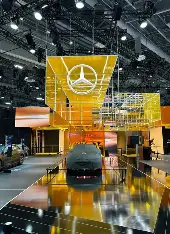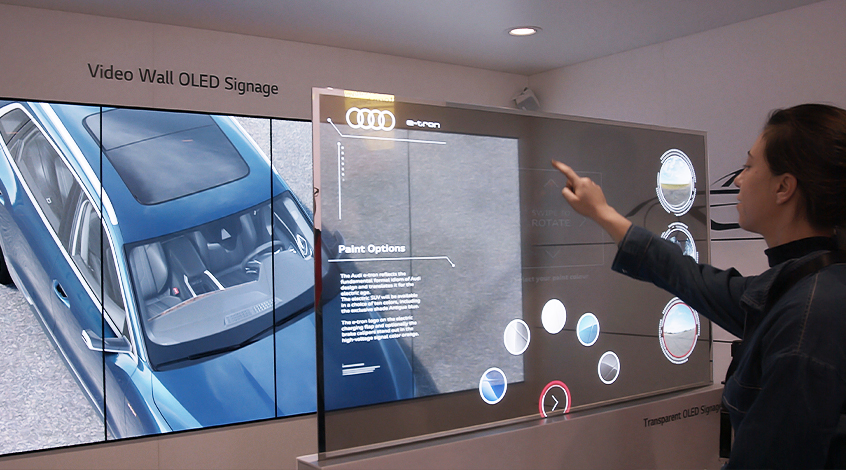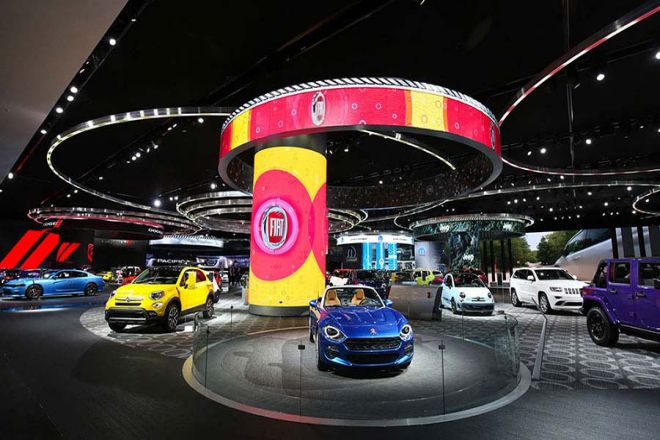

Imagine stepping into a sleek car showroom where a crystal-clear display hovers in mid-air, projecting glowing engine diagrams or futuristic color options on a real automobile parked behind it. It’s like something out of a sci-fi narrative—but this is today’s reality with transparent displays for car showroom. As someone who has partnered with top-tier auto brands to shape immersive retail experiences, I can confidently say this technology is redefining how consumers interact with cars before they even touch the wheel.
In this comprehensive exploration, we’ll dive into how transparent LED displays, glass LED screens, and even transparent OLED screens breathe life into vehicle presentations. We’ll examine technology fundamentals, compelling use cases, business benefits, and forward-thinking innovations—presented with the insight and polish you’d expect from a high-end Forbes feature.
At its core, a transparent display is essentially a high-tech window. These see-through advertising screens embed ultra-fine LED or OLED modules into glass, rendering vibrant visuals while maintaining up to 90% clarity. Think of it as cinematic layering—digital overlaid on reality.
LED-powered versions use a mesh of LEDs with pixel pitches around 2.8–4 mm and brightness levels up to 6,500 nits, ensuring visibility even in well-lit showrooms.

On the other hand, transparent OLED displays like LG’s 55″ Touch models offer richer colors and true blacks, ideal for premium showrooms. However, current OLED tech requires controlled lighting and is sensitive to ambient sun—making LED displays better suited for daylight environments .
What makes these displays truly powerful in auto retail is modularity and interactivity. High-speed touch or gesture integration, precise calibration, and real-time data feeds synced with vehicle systems make these screens an intelligent bridge between digital imagination and physical form.
Reflecting Audi’s success in Tokyo—where transparent screens synced with real vehicle controls boosted test drive bookings by 68% versus 29% via traditional screens—interactive see-through displays are game-changers. They allow users to swipe through paint options or overlay performance stats directly on the vehicle, elevating engagement and dwell time.


In a Dubai Tesla showroom, replacing 60% of printed materials with transparent LED panels freed up over 400 m²—enough to park nine additional vehicles—without changing the showroom footprint. With transparent screens as walls or curtains, walkways are navigable and uncluttered.
Imagine highlighting an EV’s battery layers, structural twists, or interior finishes directly on the hood. Whether through serene slow motion or dynamic annotations, transparent screens blend storytelling with space without distraction, creating attention and aspiration .
Audi Tokyo: Synchronized transparent LED touchscreens with vehicle controls, enabling virtual pothole demos and ultra-responsive touch latency (8 ms), mirroring human reflexes .

Mercedes Los Angeles (2024): Converted 23 physical configurator screens into transparent displays, gaining 190 m² of demo space and spiking sales by 41% in Q1 .
BMW Shanghai: Deployed floating LED curtains to highlight interior design, cutting showroom clutter by replacing demo desks with stacked screens .
LG ISE 2019 Showcase: Used 55″ transparent OLEDs for a touch-enabled car configurator, showcasing paint, mood lighting, and design elements in immersive high contrast.
The adoption of transparent display for car showrooms unlocks multiple ROI layers:
Choose screens rated at 4,500–7,000 nits for bright showrooms. Pixel pitch between 2.8–4 mm ensures crisp visuals even at close range. For tactile engagement, capacitive touch films with <0.3 mm bezels drive higher hotspot interaction.
Interactive overlays, AR-ish animations, and animated callouts that follow the vehicle lines create an immersive, guided discovery. Keep content loops lean and modular to support quick updates.
Work with AV integrators that understand lighting, heat dissipation, and EMI safety—particularly near vehicle ECMs. Opt for modular panels to allow easy service without disrupting showroom flow.
Though transparent LED screen cost is significant, leasing or revenue-share options—like ad rentals on showroom facades—can offset investment. ROI is measurable in increased test drives, upsells, and media mentions.

Transparent OLED Displays: For spin-off zones or luxury lounges, transparent OLED adds pixel-perfect color depth. Ideal in dimmer showrooms or VIP environments .
MicroLED Innovations: Next-gen microLED panels promise smartphone-level brightness, efficiency, and transparency—a tight integration fit for flagship showrooms.
AR & Sensor Fusion: When Porsche Munich layered multiple screens, it created eight virtual zones within 300 m²—virtually multiplying immersive space.
Automated Configuration Sync: Tesla-style VR overlays, synchronized with steering input and CAN signals, are moving from demo zones to interactive showroom floors .

The tech related to transparent display in car showroom tech is accelerating beyond novelty—projected at nearly $4.5 billion market value by 2025. As vehicles evolve—especially EVs and connected cars—so will consumer expectations for deeper, richer engagement during purchase. Transparent display systems not only modernize brand interaction but actively catalyze emotional buy-in.
In a high-stakes competitive landscape, car brands that innovate at customer touchpoints will lead. Transparent displays for car showrooms are not just showpieces—they’re intelligent channels of interaction, education, and persuasion. They help shoppers visualize, interact, and decide faster—and in style.
If you’re considering your first transparent screen rollout or planning a full showroom upgrade, let’s talk bright spec matchups, content strategies, or vendor pacing. The future of automotive retail doesn’t wait—why should you?